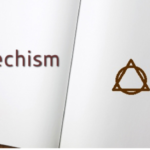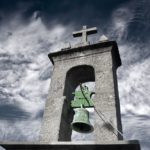It is estimated that John Wesley traveled around 250,000 miles and preached over 40,000 sermons in a span of 66 years. This series by Mark K. Olson, taken from his website Wesleyscholar.com, includes summaries and links to some of Wesley’s most famous and important sermons. This first installment is on Wesley’s sermon “The Witness of the Spirit” from 1746.
The Witness of the Spirit
Romans 8:16
The Spirit itself beareth witness with our spirit, that we are the children of God.
When the Evangelical Revival broke out in the 1730s there was no aspect of conversion probably more central than assurance of salvation. The gift of assurance was called “the witness of the Spirit.” It was by the Spirit’s testimony to a new convert that they knew beyond doubt that God have saved them and gave them new birth in Christ.
Therefore, when Wesley published a series of sermons in 1746 of the doctrines he had been preaching since 1738, he included the sermon The Witness of the Spirit. Twenty years later he would return to this subject and publish a second sermon by the same title, so the two sermons became marked with the Roman numerals I and II to distinguish them. We will look at the first sermon.
Albert Outler notes that Wesley’s theory of religious knowledge was intuitionist, but it was an intuition connected to the objective ground of religious experience. The objective ground was the reality of a changed life through faith in Christ. True conversion produces the fruits of the Spirit and other marks or characteristics of an authentic Christian faith. Wesley therefore understood Romans 8:16 to teach there are two witnesses to conversion: (1) the witness of the Holy Spirit and (2) the witness of our spirit.
Background
The idea of a two-fold witness was taught in Puritan theology of the 17th century. For example, both John Owen and Thomas Goodwin held that the Spirit imparts a sense of assurance in the heart alongside a rational deduction from seeing a changed life. The consensus was that assurance was for mature believers who had demonstrated their perseverance over time.
The Pietists developed the concept of assurance further by incorporating it in the conversion event. For example, Augustus Francke emphasized the necessity of a penitential struggle with conversion as a breakthrough to an overwhelming sense of peace, joy, and assurance – seen as the witness of the Spirit to one’s salvation.
The new evangelicals, like Wesley, followed the Pietists and emphasized the gift of assurance in the conversion event. A felt assurance of salvation was a common privilege for everyone who believes in Christ for salvation.
But what exactly was this assurance by the Spirit’s testimony? Many in Wesley’s day had merged the Spirit’s witness with the testimony of our spirit to conclude that it is a single testimony — a rational deduction from seeing the Spirit’s fruit or other external marks of the faith in one’s life. Wesley (and other evangelicals) disagreed. In his sermon he spells out his reasons for a two-fold witness of assurance.
The Witness of the Spirit
In the first section Wesley exegetes Romans 8:16 to show that the text teaches a two-fold witness of assurance to salvation. The witness of our spirit is elaborated in paragraphs I.2-6. Scripture spells out many marks of the Christian, like the fruits of the Spirit and Christian obedience. These are called by Wesley “rational evidence.” He then claims that anyone is “immediately conscious” of whether these marks are evident in their life. Just as you are immediately conscious whether you love someone or “perceive if you love, rejoice, and delight in God” (I.5).
Wesley considered the witness of our spirit as an indirect testimony because it involved a series of steps by which a person could know they are saved. And these steps took time for them to develop. For a person to know on the spot whether they were genuinely converted or not, they needed a testimony that is more direct and immediate – the witness of the Spirit.
Wesley defined the Spirit’s witness as “an inward impression on the soul, whereby the Spirit of God directly ‘witnesses to my spirit that I am a child of God” (I.7). By “inward impression” Wesley meant a sensation, feeling, or a conviction of belief. This is what Wesley felt at his evangelical conversion on May 24, 1738: “I felt my heart strangely warmed. I felt I did trust in Christ…and an assurance was given me that he had taken away my sins.”
Wesley then explained that the Spirit’s testimony is fundamental to the witness of our spirit. To summarize his argument: we cannot be holy unless we love God, and we cannot love God unless we first know his “pardoning love” revealed to us by the Spirit (I.8). In this way Wesley made the witness of the Spirit essential to evangelical conversion and the “very foundation of Christianity” (Letter to “John Smith,” 12/30/1745). He went on to tell “John Smith” that this was the “main doctrine of the Methodists.” Wesley continued through his life to maintain that there is no evangelical experience apart from the Spirit’s direct testimony of our acceptance in Christ.
At the same time Wesley acknowledged that any claim to the Spirit’s witness must be backed up with the scriptural marks and evidences of authentic faith. A mere profession is not sufficient. In this way Wesley grounded the intuitionist knowledge of acceptance on the objective ground of a changed life. In the end, holy living – the witness of our own spirit – is the final word on assurance.
Publication
The Witness of the Spirit, Discourse I was included in the 1746 release of Sermons on Several Occasions that summarized Wesley’s evangelical message. It was later incorporated into his collected works in 1771 and has been published numerous times thereafter.
Sermon link: The Witness of the Spirit I





